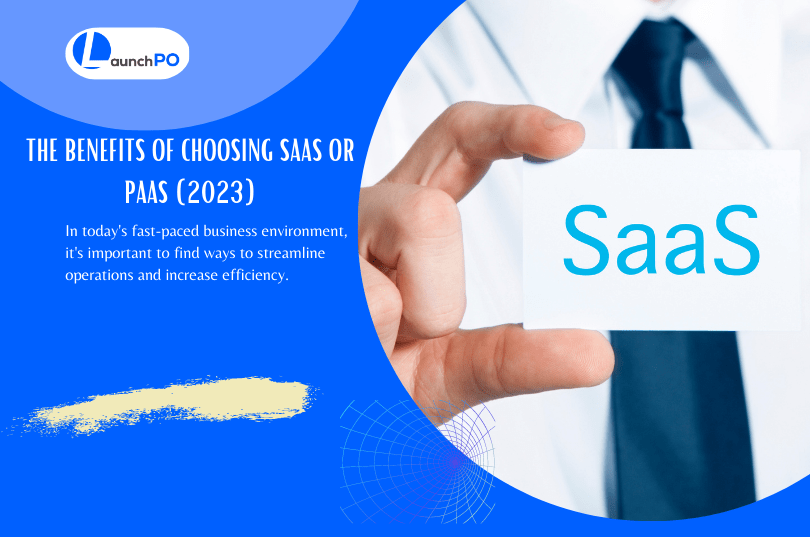In today’s fast-paced business environment, it’s important to find ways to streamline operations and increase efficiency. One way to do this is by choosing the right software or platform to support your business. In this blog post, we’ll take a closer look at the differences between SaaS (Software as a Service) and PaaS (Platform as a Service) and the benefits of choosing one or the other for your business.
SaaS is a model of software delivery in which a company provides access to software over the internet, typically on a subscription basis. This means that instead of purchasing and installing software on your own servers or computers, you can access it through the cloud. This can be a cost-effective solution for small businesses or startups, as it allows you to access powerful software without the upfront cost of purchasing and installing it.
PaaS, on the other hand, is a platform that provides the infrastructure and tools needed to build, test, and deploy software applications. This can be particularly useful for companies that need to build custom software or applications, as it provides a ready-made platform for development without the need to build and maintain your own infrastructure.
So, why should you care about the difference between SaaS and PaaS?
Key benefits of SaaS and PaaS
Here are a few key benefits to consider:
- Cost savings: As mentioned, SaaS and PaaS can be more cost-effective than purchasing and installing software or building your own infrastructure. By subscribing to a SaaS service, you only pay for what you use and can easily scale up or down as your needs change. PaaS can also help you save on infrastructure costs, as you can use the platform’s resources instead of building your own.
- Ease of use: Both SaaS and PaaS are designed to be easy to use and require minimal setup. With SaaS, you can often start using the software within minutes, as there’s no need to install or configure anything on your own. PaaS is also designed to be user-friendly, with tools and resources that make it easier to build and deploy applications.
- Flexibility: SaaS and PaaS offer flexibility in terms of scale and customization. With SaaS, you can easily scale up or down as your needs change, and many services offer customizable features and integrations. PaaS also allows for flexibility, as you can build and deploy custom applications to meet your specific needs.
Examples of SaaS and PaaS
Here are a few examples of SaaS (Software as a Service) and PaaS (Platform as a Service) and comparisons between the two:
1.SaaS:
Salesforce CRM: A customer relationship management platform delivered as a service via the internet.
Adobe Creative Cloud: A suite of creative software applications delivered as a service over the internet.
2.PaaS:
Amazon Web Services (AWS): A cloud computing platform that allows users to build, run, and manage applications without the need for infrastructure.
Microsoft Azure: A cloud computing platform that provides a range of services, including virtual machines, web and mobile applications, and analytics.
Comparing SaaS and PaaS:
- SaaS typically refers to software applications that are delivered as a service over the internet, while PaaS refers to a platform that allows users to build, run, and manage applications without the need for infrastructure.
- SaaS applications are usually subscription-based and require little or no upfront investment, while PaaS platforms typically charge users based on the resources they consume.
- SaaS is generally easier to use and requires less technical knowledge, while PaaS requires more technical expertise and customization.
- SaaS applications are typically more focused on a specific task or function, while PaaS platforms offer a broader range of services and tools.
In summary, SaaS and PaaS offer a range of benefits for businesses looking to streamline operations, increase efficiency, and save on costs.
By understanding the differences between these two approaches and the benefits they offer, you can make an informed decision about the right fit for your business.










